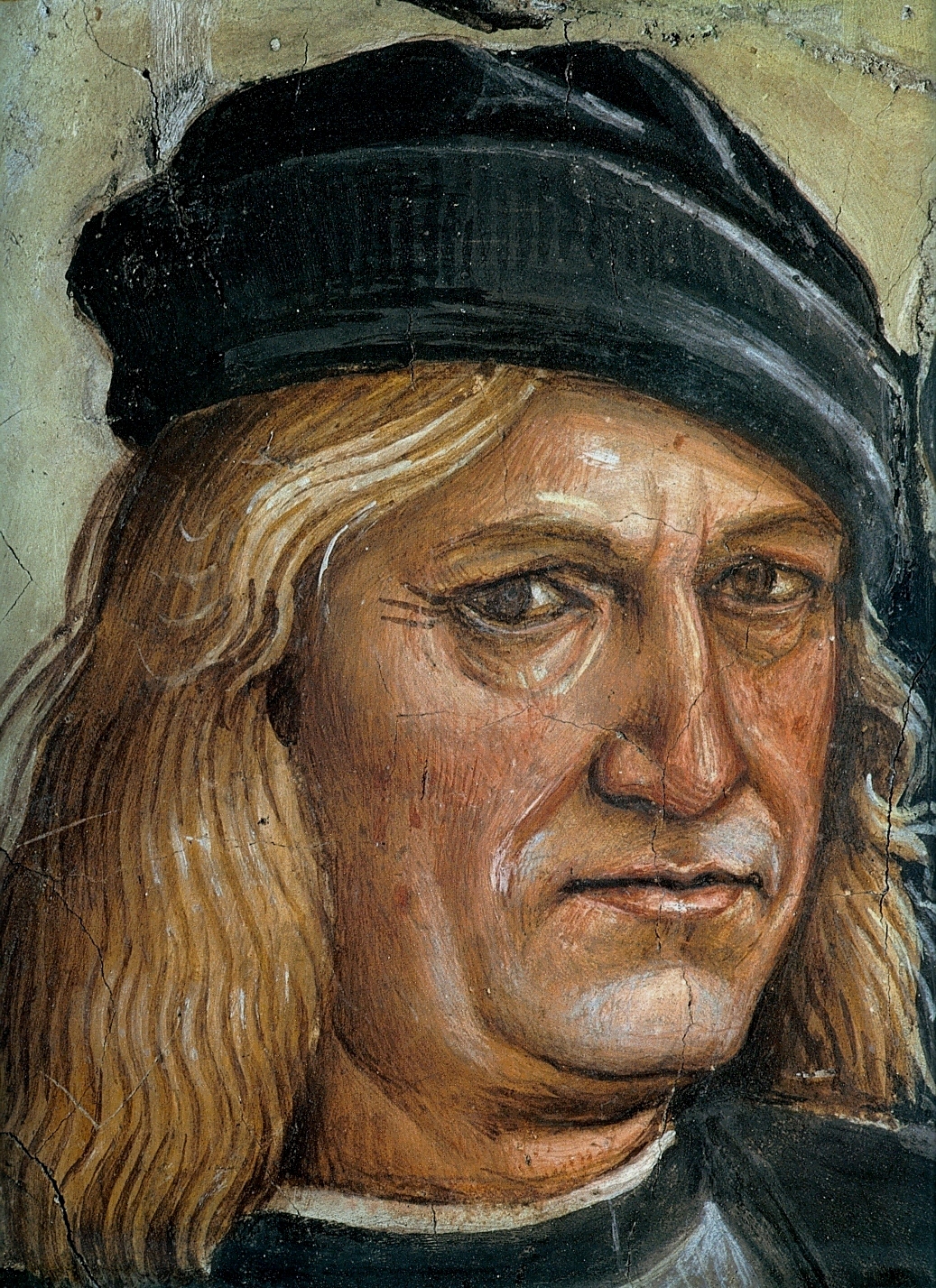|
Virgin Enthroned With Saints (Signorelli)
The ''Virgin Enthroned with Saints'' is a painting by the Italian Renaissance artist Luca Signorelli, dated to 1491 and housed in the Pinacoteca Comunale (Municipal Art Gallery) of Volterra, central Italy. History In 1490-1492 Signorelli was in Volterra, a city under Florentine control, under the patronage of the House of Medici. Aside from this ''Madonna'', he painted an ''Annunciation'', a ''Circumcision of Christ'' and, perhaps, the '' Portrait of Man''. Description The panel's subject is a Holy Conversation, inspired by similar works from the Venetian area, such as Antonello da Messina's San Cassiano Altarpiece and its derivations by Giovanni Bellini and others. Similarities include the green canvas hanging behind Mary's throne, continuing in the broccato carpet at her feet. Also of the same origin is the central cartouche with the artist's signature, derived from Flemish painting and introduced in Italy by Paduan artists. The scene comprises two levels: on the upper one ... [...More Info...] [...Related Items...] OR: [Wikipedia] [Google] [Baidu] |
Luca Signorelli
Luca Signorelli ( – 16 October 1523) was an Italian Renaissance painter from Cortona in Tuscany, who was noted in particular for his ability as a draftsman and his use of foreshortening. His massive frescos of the ''Last Judgment'' (1499–1503) in Orvieto Cathedral are considered his masterpiece. In his early 40s he returned to live in Cortona, after working in Florence, Siena and Rome (1478–84, painting a now lost section of the Sistine Chapel). With an established reputation, he remained based in Cortona for the rest of his life, but often travelled to the cities of the region to fulfill commissions. He was probably trained by Piero della Francesca in Florence, as his cousin Giorgio Vasari wrote, and his Quattrocento style became rather out of date in the new century. Cortona will host a major exhibition in 2023 to celebrate the 500th anniversary of his death. Biography He was born Luca d'Egidio di Ventura in Cortona, Tuscany (some sources call him Luca da Corto ... [...More Info...] [...Related Items...] OR: [Wikipedia] [Google] [Baidu] |
Early Netherlandish Painting
Early Netherlandish painting, traditionally known as the Flemish Primitives, refers to the work of artists active in the Burgundian and Habsburg Netherlands during the 15th- and 16th-century Northern Renaissance period. It flourished especially in the cities of Bruges, Ghent, Mechelen, Leuven, Tournai and Brussels, all in present-day Belgium. The period begins approximately with Robert Campin and Jan van Eyck in the 1420s and lasts at least until the death of Gerard David in 1523,Spronk (1996), 7 although many scholars extend it to the start of the Dutch Revolt in 1566 or 1568–Max J. Friedländer's acclaimed surveys run through Pieter Bruegel the Elder. Early Netherlandish painting coincides with the Early and High Italian Renaissance, but the early period (until about 1500) is seen as an independent artistic evolution, separate from the Renaissance humanism that characterised developments in Italy. Beginning in the 1490s, as increasing numbers of Netherlandish and other Nor ... [...More Info...] [...Related Items...] OR: [Wikipedia] [Google] [Baidu] |

